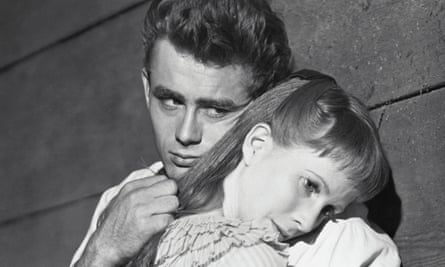Years before becoming one of America’s most celebrated authors, John Steinbeck wrote at least three novels which were never published. Two of them were destroyed by the young writer as he struggled to make his name, but a third – a full-length mystery werewolf story entitled Murder at Full Moon – has survived unseen in an archive ever since being rejected for publication in 1930.
Now a British academic is calling for the Steinbeck estate to finally allow the publication of the work, written almost a decade before masterpieces such as The Grapes of Wrath, his epic about the Great Depression and the struggles of migrant farm workers.
“There would be a huge public interest in a totally unknown werewolf novel by one of the best-known, most read American writers of the 20th century,” said Professor Gavin Jones, a specialist in American literature at Stanford University.
“This is a novel that really nobody knows about. It’s a complete novel by Steinbeck. It’s incredible.”
The 233-page typescript has been stored in the vast archives of the Harry Ransom Center at the University of Texas in Austin after Steinbeck’s unsuccessful attempt to have it published more than 90 years ago.
Finding recognition was a struggle for the author, who eventually won the Nobel prize for literature in 1962. While his father helped him financially, he also supported himself as a manual labourer before going on to write classics such as the 1937 novella Of Mice and Men, about two migrant labourers, and East of Eden in 1952.
Set in a fictional Californian coastal town, Murder at Full Moon tells the story of a community gripped by fear after a series of gruesome murders takes place under a full moon. Investigators fear that a supernatural monster has emerged from the nearby marshes. Its characters include a cub reporter, a mysterious man who runs a local gun club and an eccentric amateur sleuth who sets out to solve the crime using techniques based on his obsession with pulp detective fiction.
The typescript even has two illustrations by Steinbeck. They depict the floorplan of the building where the murders took place, including the victims’ bodies. In the book, these are drawings made by one of the characters trying to solve the murders.
Jones described it as a world away from Steinbeck’s realist representations of the Great Depression, which may explain why he wrote this one under a pen name, Peter Pym. “Even though it is very different from Steinbeck’s other work, in a totally different genre, it actually relates to his interest in violent human transformation – the kind of human-animal connection that you find all over his work; his interest in mob violence and how humans are capable of other states of being, including particularly violent murderers.
“It’s certainly not Steinbeck the realist, but it is Steinbeck the naturalist, interested in human nature. It’s a horror potboiler, which is why I think readers would find it more interesting than a more typical Steinbeck. It’s a whole new Steinbeck – one that predicts Californian noir detective fiction. It is an unsettling story whose atmosphere is one of fog-bound, malicious, malignant secrecy.”

Photograph: George Rinhart/Corbis/Getty Images
Speculating on why publishers rejected it, he wonders whether it was deemed too lurid at the time, especially since Steinbeck was then an unknown author.
But Steinbeck’s literary agents, McIntosh & Otis, told the Observer they would not be publishing the novel. “As Steinbeck wrote Murder at Full Moon under a pseudonym and did not choose to publish the work during his lifetime, we uphold what Steinbeck had wanted,” they said. “As the estate’s agents, we do not further exploit the works beyond what had been the author and estate’s wishes.”
Hearing of the estate’s response, Jones said: “Steinbeck did attempt to have the book published early in his career, and he did not destroy this manuscript as he did several others. Many authors have their works published posthumously, and write under pseudonyms.”
William Souder, author of the acclaimed 2020 biography Mad at the World: A Life of John Steinbeck, also urged the estate to allow publication. “Why wouldn’t a complete novel by a famous author find its way into the daylight?” he said. “I hope it does.”
In another archive – the Center for Steinbeck Studies, San Jose State University – Jones has also unearthed a virtually complete unpublished Steinbeck story called Case History. It is an earlier version of a published story, The Vigilante, based on an actual lynching that took place in San Jose in 1933 of two men accused of kidnapping and murdering a local resident. The two battered, partly naked men were hung from trees before a crowd of up to 15,000 onlookers in one of the last mass lynchings in the US.
Steinbeck was haunted by the legacies of racism and injustice in the American west, and the earlier version of the story reveals that, in the final version, Steinbeck had rewritten history, changing the lynching of two white men, in the actual event, to that of a single African American man. In Case History, a single white man is lynched.
“Both versions of the story are about a theory of mob activity and how humans are capable of perpetrating this violence, told from such a close perspective that I wonder, could Steinbeck have witnessed the events of the original lynching?” said Jones. “His in-laws were from San Jose, and he was fascinated with mob action.”
Jones’s research will feature in his forthcoming book, Reclaiming John Steinbeck: Writing for the Future of Humanity, which will be published by Cambridge University Press on 10 June.
